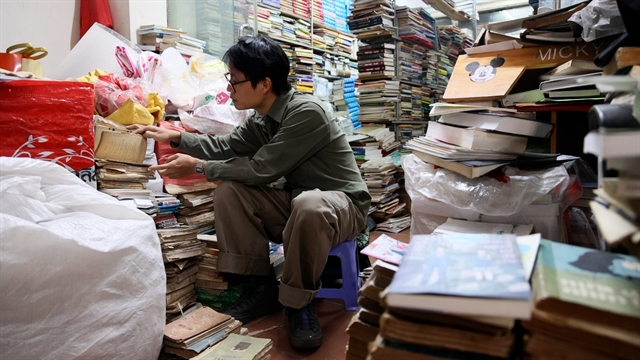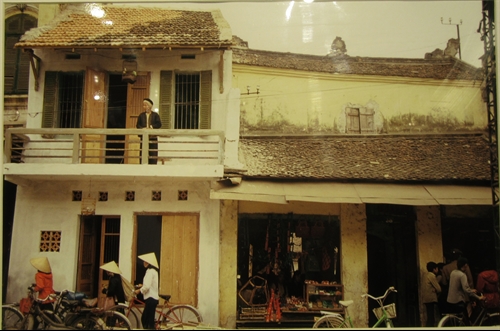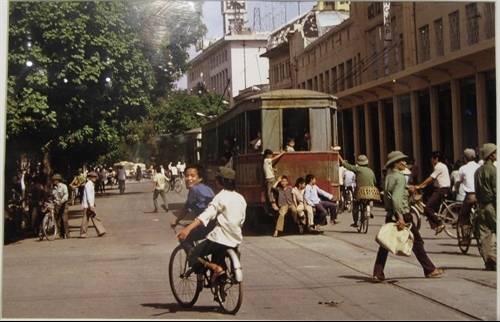 Life & Style
Life & Style

An exhibition is underway of more than 100 photos taken by French journalist Michel Blanchard, bureau chief of AFP news in Hà Nội from 1981 to 1983.
 |
| Daily life: An old house on Hàng Đào street in Hà Nội in 1984. |
by Bạch Liên
HÀ NỘI - A new photo exhibition in the capital invites the public to visit Việt Nam in the 1980s, as seen through the eyes of a French journalist.
An exhibition is underway of more than 100 photos taken by Michel Blanchard, bureau chief of AFP news in Hà Nội from 1981 to 1983.
Even after he finished his two-year assignment in Việt Nam, he continued to visit the country for over ten years as a writer of travel guides, which became among the first books describing the region after the war.
The photos witness the important transitional period of Việt Nam, from a subsidised economy to the renewal period starting in 1986. Moreover, the exhibition is a unique opportunity for the Vietnamese to savor the nostalgia before the great transformation of the 1990s took place, as well as the economic boom that followed.
During his stay in Hà Nội, for a weekend or vacation, Blanchard often travelled by bicycle through the streets of the capital and captured in his lens the daily life of local people. Not being a professional photographer, taking pictures became one of his life’s passionate hobbies.
He was touched and impressed by the simple beauty of the landscapes and the kindnesses displayed by people during that time.
He began to take photos of Phùng Khắc Khoan Street, where he worked during his stay in Hà Nội. He also captured on film the scenes and people of different streets in the city, as well as various regions he visited in Việt Nam from the north to the south, prior to the country’s opening to foreign tourists.
“From those trips, I discovered a mysterious and simple Viet Nam full of charm and kindness, which kept its traditions while developing day after day following the war. The country kept inspiring me and surprising me,” Blanchard said.
Very different from the Hà Nội of today, which has so many motorbikes and cars on the streets, the city’s people in the 1980s used to travel by bicycles and trams.
“ I remember in Hà Nội at that time that there were only some tea shops, and there often was not electricity. I met children who studied their lessons under the light of a street lamp… I have never forgotten this image. I regret my not being able to capture that moment,” he said.
A child, little Phong, who was captured in a photo in 1983 playing with a bucket of water on a hot summer day in front of his house, was also present at the opening ceremony of the exhibition.
Phong, now a 35 year-old father of a son, was happy to see his photo, which has become a precious record of his life, since his family could not afford a camera during those years. He has often met with Blanchard when he returned to visit the city.
Experts and the public who viewed the photos on display were highly impressed.
“The great value of photography is to make an instant into an eternity. We should respect those works because it is part of the history which was written by images. They can help younger generations to understand the country’s past,” historian Dương Trung Quốc said.
Blanchard recalled that he was given his first camera when he was 14 years old, and he has always loved taking pictures.
“I first came to work in Việt Nam in June 1981. This country remains a marvelous subject for me, a loving feeling that has never stopped. Everything attracted me: people, landscapes, simple jobs, architecture and light.”
“Việt Nam, at that time, was very beautiful. Each time I took a picture, I was sure to have a good photo. The inhabitants always had smiles on their faces,” he recalled.
“When I again look at some photos, I even remember the smells in the air. I have a great number of photos of Việt Nam, more than photos of any other country,” he said.
Blanchard worked as an AFP journalist from 1976 to 2006. After that, he began writing for a tourism daily newspaper, Le Quotidien du Toursime, and is a member of the Travel Journalist Association.
Before the opening ceremony, Blanchard also held a conference about the life of a press correspondent in Ha Noi in the 1980s.
The exhibition remains open until April 30 at l’Espace, the French Cultural Centre, located at 24 Tràng Tiền Street. VNS
 |
| A bygone era: Electric trains on Đinh Tiên Hoàng street in Hà Nội in 1983. |